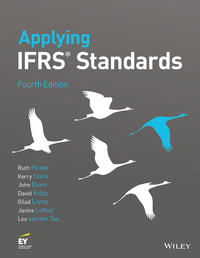 if you can link any other post thst is completed that would be great too.
if you can link any other post thst is completed that would be great too.
P9-28A (similar to) Question Help . . On August 31, 2018, Orchard Floral Supply had a $170,000 debit balance in Accounts Receivable and a $6,800 credit balance in Allowance for Bad Debts. During September, Orchard made: Sales on account, $560,000. Ignore Cost of Goods Sold. Collections on account, $598,000. Write-offs of uncollectible receivables, $7,000. Read the requirements. Requirement 1. Journalize all September entries using the allowance method. Bad Debts Expense was estimated at 3% of credit sales. Show all September activity in Accounts Receivable, Allowance for Bad Debts, and Bad Debts Expense (post to these T-accounts). Begin by journalizing all September entries using the allowance method. (Record debits first, then credits. Select the explanation on the last line of the journal entry table.) Sales on account, $560,000. Ignore Cost of Goods Sold. X i - Requirements Date Accounts and Explanation Debit Credit Sep. 30 1. Journalize all September entries using the allowance method. Bad debts expense was estimated at 3% of credit sales. Show all September activity in Accounts Receivable, Allowance for Bad Debts, and Bad Debts Expense (post to these T-accounts). 2. Using the same facts, assume that Orchard used the direct write-off method to account for uncollectible receivables. Journalize all September entries using the direct write-off method. Post to Accounts Receivable and Bad Debts Expense, and show their balances at September 30, 2018. 3. What amount of Bad Debts Expense would Orchard report on its September income statement under each of the two methods? Which amount better matches expense with revenue? Give your reason. 4. What amount of net accounts receivable would Orchard report on its September 30, 2018, balance sheet under each of the two methods? Which amount is more realistic? Give your reason. Choose from any list or enter any number in the input fields and then click Check Answer. Print None P9-28A (similar to) Question Help . . On August 31, 2018, Orchard Floral Supply had a $170,000 debit balance in Accounts Receivable and a $6,800 credit balance in Allowance for Bad Debts. During September, Orchard made: Sales on account, $560,000. Ignore Cost of Goods Sold. Collections on account, $598,000. Write-offs of uncollectible receivables, $7,000. Read the requirements. Requirement 1. Journalize all September entries using the allowance method. Bad Debts Expense was estimated at 3% of credit sales. Show all September activity in Accounts Receivable, Allowance for Bad Debts, and Bad Debts Expense (post to these T-accounts). Begin by journalizing all September entries using the allowance method. (Record debits first, then credits. Select the explanation on the last line of the journal entry table.) Sales on account, $560,000. Ignore Cost of Goods Sold. X i - Requirements Date Accounts and Explanation Debit Credit Sep. 30 1. Journalize all September entries using the allowance method. Bad debts expense was estimated at 3% of credit sales. Show all September activity in Accounts Receivable, Allowance for Bad Debts, and Bad Debts Expense (post to these T-accounts). 2. Using the same facts, assume that Orchard used the direct write-off method to account for uncollectible receivables. Journalize all September entries using the direct write-off method. Post to Accounts Receivable and Bad Debts Expense, and show their balances at September 30, 2018. 3. What amount of Bad Debts Expense would Orchard report on its September income statement under each of the two methods? Which amount better matches expense with revenue? Give your reason. 4. What amount of net accounts receivable would Orchard report on its September 30, 2018, balance sheet under each of the two methods? Which amount is more realistic? Give your reason. Choose from any list or enter any number in the input fields and then click Check Answer. Print None
 if you can link any other post thst is completed that would be great too.
if you can link any other post thst is completed that would be great too.





